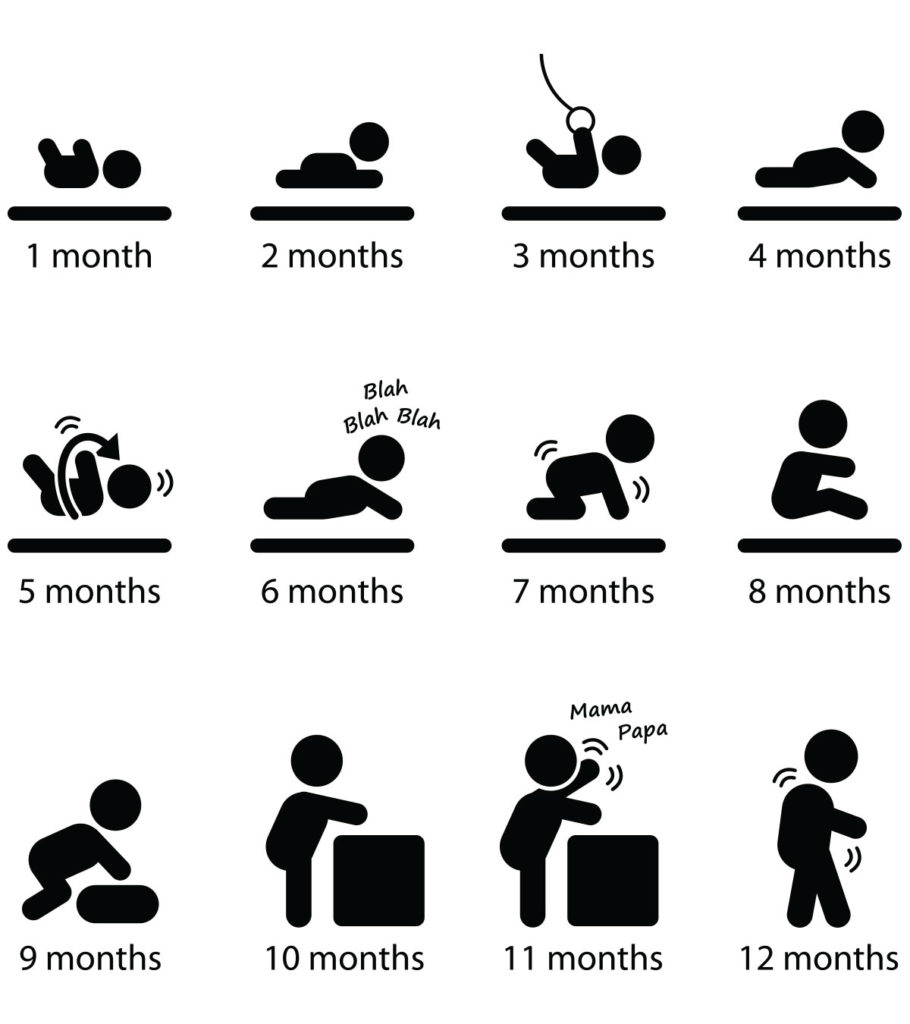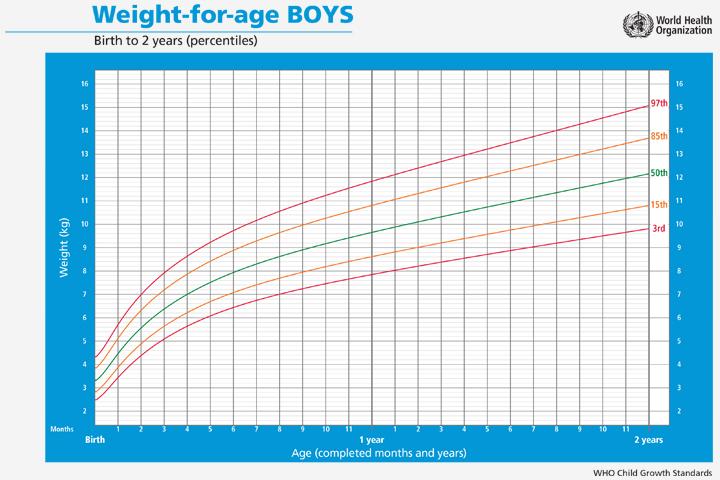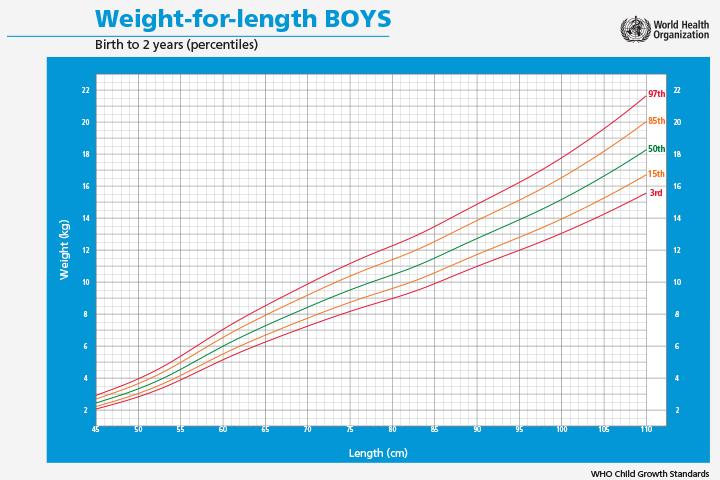A baby boy growth chart can give you measurements of the growth standards of baby boys. Tracking your baby’s growth helps you monitor their development in relation to their peers. Each baby achieves growth and development at a different pace, and slight delays are not a cause for concern. Growth charts help you know if their development is within the average for their age. Read on to know more about a baby boy growth chart, how to understand a growth chart and what parameters are compared in an infant growth chart.
How Is Baby Boy Growth Measured?
When we talk about baby boy growth chart, we usually gauge it in the following broad categories (1):
- Height
- Weight
- Other motor milestones such as sitting up independently, crawling, and walking with assistance.
Initially, doctors are more concerned about the baby’s height and weight. While a baby’s height depends largely on his genes, it is very important to keep track of baby weight charts. Weight can tell whether a baby is able to digest food properly and is able to extract nutrition from it.
Child Growth Percentile Calculator
| Enter the Following Information: | |
|---|---|
| BoyGirl | |
| Months | |
| Kgs | |
| Cms | |
| Cms | |
Baby Growth Chart
A growth chart is essential to track your baby’s progress in accordance with his age. Though there is no ideal height and weight, there is a particular growth pattern that helps you assess your baby’s milestones.
Boys and girls have different growth charts because both have different growth rates and patterns (2).
Monitoring your baby boy’s growth during infancy and toddlerhood can provide valuable insights that will help you continue to support your child’s physical and emotional well-being throughout their adolescence.
Baby Boy’s Growth Chart
The below chart provides you the measurement that ranges between 3rd and 97th percentile of the World Health Organization (WHO) growth standards for baby boys (3). If your baby boy falls within the right range, then it is said that your boy has the right height, weight, and head circumference at his age.
| Months | Length (cm) 3rd to 97th percentile |
Weight (kg) 3rd to 97th percentile |
Head circumference (cm) 3rd to 97th percentile |
|---|---|---|---|
| 0 | 46.3 – 53.4 | 2.5 – 4.3 | 32.1 – 36.9 |
| 1 | 51.1 – 58.4 | 3.4 – 5.7 | 35.1 – 39.5 |
| 2 | 54.7 – 62.2 | 4.4 – 7.0 | 36.9 – 41.3 |
| 3 | 57.6 – 65.3 | 5.1 – 7.9 | 38.3 – 42.7 |
| 4 | 60.0 – 67.8 | 5.6 – 8.6 | 39.4 – 43.9 |
| 5 | 61.9 – 69.9 | 6.1 – 9.2 | 40.3 – 44.8 |
| 6 | 63.6 – 71.6 | 6.4 – 9.7 | 41.0 – 45.6 |
| 7 | 65.1 – 73.2 | 6.7 – 10.2 | 41.7 – 46.3 |
| 8 | 66.5 – 74.7 | 7.0 – 10.5 | 42.2 – 46.9 |
| 9 | 67.7 – 76.2 | 7.2 – 10.9 | 42.6 – 47.4 |
| 10 | 69.0 – 77.6 | 7.5 – 11.2 | 43.0 – 47.8 |
| 11 | 70.2 – 78.9 | 7.4 – 11.5 | 43.4 – 48.2 |
| 12 | 71.3 – 80.2 | 7.8 – 11.8 | 43.6 – 48.5 |
Source: WHO growth standards
The best way to keep a track of your baby boy height and weight is to take him for regular doctor checkups. Your child’s doctor will measure his height, weight and head circumference and will then compare them with the standard growth charts. You should use the below WHO charts to know his growth curve and percentile.
Weight for age:
Length for age:
Weight for length:
What Factors Can Influence Baby’s Growth?
Your baby boy’s growth rate depends partly on his body type and metabolism, and partly on his general health and wellness, feeding habits and the environment. The factors that have an influence include (4) (5) (6):
Feeding: Feeding provides your baby with the necessary nutrients he usually requires to grow. Until he is six months of age, he is dependent on breast milk for nutrition. The amount and duration of feeding affect his growth (7).
Your Health When You Were Pregnant: This can influence the store of nutrients your baby possesses when born. Your diet, lifestyle habits and weight can also have a significant influence on your child’s growth in his first year.
Birth Weight Of Your Baby: It indicates how well you have nourished your baby during pregnancy. But, babies born with high birth weight grow slowly, and babies born with low birth weight grow faster. It is also known as ‘catch-down’ or ‘catch-up’ growth (7).
Hereditary: Genes also play a significant role in baby’s growth. If both the parents are well-built and tall, your child is likely to be in a high percentile for height and weight. Likewise, if both parents are lean and short, even the baby might be lighter and of a short stature. For example, people from different cultures have different heights. People from the Netherlands are normally tall whereas people from India are normally less tall.
Minor Ailments: Illnesses like flu and ear infections have an effect on baby’s growth, but only temporary. He may not feel like drinking milk when he is ill, and this may affect his growth for a week or more. The growth returns to normal once he starts getting better.
Your Health After Pregnancy: If you suffer from postnatal depression or are unwell for any reason, it will be difficult for you to take care of your baby. This may ultimately affect his growth. However, it is not permanent and gets resolved once you recover.
When Should You Consult a Doctor?
Sometimes you may worry about the growth and development patterns of your children.
- Some children who are short initially might grow a lot in the later stage
- Some who grow rapidly, in the beginning, might slow down when they grow up.
The baby boy growth chart can help you check if your boy is thriving according to his age. While it’s not a good idea to rely simply on chart numbers to determine your child’s growth, because growth is influenced by a variety of factors that are unique to each baby, it’s also not a good idea to ignore any significant delays or deviations. If you notice any glaring difference in your child’s growth pattern, you may consult your child’s doctor to seek timely treatment and guidance.
Key Pointers
- Boys and girls have different growth charts due to growth rate and pattern variances.
- A baby boy growth chart is used to track development and growth compared to peers.
- The chart measures height, motor, and weight milestones like crawling, and sitting up.
- A baby boy’s development rate is determined by food, general health, genetics, and environment.
- Low birth weight newborns are more prone to mental health issues later in life.
Stay informed and at ease with an enlightening video about growth charts and babies. Gain crucial insights to alleviate concerns and enrich your rewarding and confident parenting journey. Happy Parenting!














